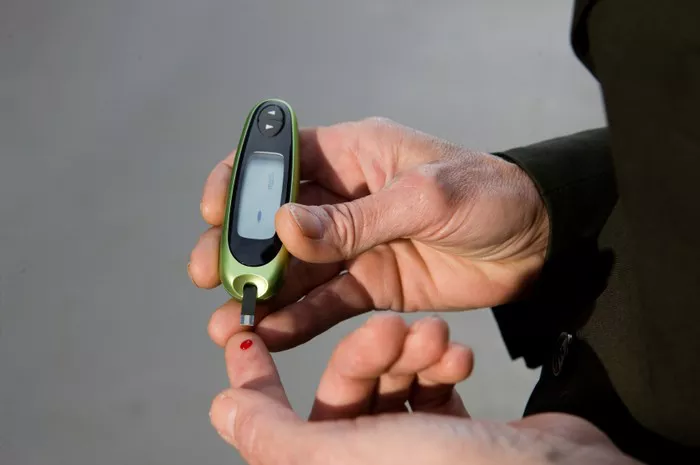Reactive hypoglycemia is thought to result from an exaggerated insulin response following a meal, leading to a rapid decline in blood glucose levels. Understanding and managing reactive hypoglycemia involves dietary adjustments that stabilize blood sugar levels and prevent rapid fluctuations. This article explores the types of foods that are beneficial for individuals with reactive hypoglycemia and provides practical dietary strategies to manage this condition effectively.
1. Focus on Low-Glycemic Index (GI) Foods
Understanding the Glycemic Index
The glycemic index (GI) is a measure of how quickly a carbohydrate-containing food raises blood glucose levels. Foods with a low GI (55 or less) cause a slower, more gradual rise in blood sugar, which can help prevent the rapid spikes and subsequent drops associated with reactive hypoglycemia.
Examples of Low-GI Foods
- Non-Starchy Vegetables: Leafy greens, broccoli, cauliflower, peppers, and tomatoes.
- Whole Grains: Quinoa, barley, oats, and brown rice.
- Legumes: Lentils, chickpeas, black beans, and kidney beans.
- Fruits: Apples, pears, berries, and citrus fruits.
- Dairy: Plain yogurt and milk.
Benefits of Low-GI Foods
Incorporating low-GI foods into meals helps maintain stable blood glucose levels and reduces the likelihood of hypoglycemic episodes. These foods also tend to be high in fiber, which further slows digestion and glucose absorption.
2. Incorporate High-Fiber Foods
Role of Fiber in Blood Sugar Regulation
Fiber, particularly soluble fiber, slows the digestion and absorption of carbohydrates, leading to a more gradual rise in blood sugar levels. This can help prevent the rapid insulin response that triggers reactive hypoglycemia.
Sources of Soluble Fiber
- Oats: A great source of beta-glucan, a type of soluble fiber.
- Legumes: Lentils, beans, and peas are high in soluble fiber.
- Fruits: Apples, pears, berries, and citrus fruits.
- Vegetables: Brussels sprouts, carrots, and sweet potatoes.
- Nuts and Seeds: Chia seeds, flaxseeds, and psyllium husk.
Incorporating Fiber-Rich Foods into Meals
Adding fiber-rich foods to every meal can help maintain stable blood sugar levels. For example, start the day with oatmeal topped with berries and chia seeds, or include a side of beans or lentils with lunch and dinner.
3. Opt for Balanced Meals with Protein and Healthy Fats
The Importance of Protein
Protein has a minimal impact on blood glucose levels and can slow the absorption of carbohydrates when consumed together. Including a source of protein in each meal and snack helps stabilize blood sugar levels and keeps you feeling full longer.
Sources of Lean Protein
- Poultry: Chicken and turkey.
- Fish: Salmon, mackerel, and sardines.
- Eggs: A versatile and nutrient-dense option.
- Dairy: Greek yogurt, cottage cheese, and milk.
- Plant-Based Proteins: Tofu, tempeh, and legumes.
The Role of Healthy Fats
Healthy fats also slow digestion and promote satiety, helping to prevent rapid blood sugar spikes. Including healthy fats in meals can improve blood sugar control and provide essential fatty acids.
Sources of Healthy Fats
- Nuts and Seeds: Almonds, walnuts, chia seeds, and flaxseeds.
- Oils: Olive oil, avocado oil, and coconut oil.
- Avocado: A nutrient-dense source of healthy fats.
- Fatty Fish: Rich in omega-3 fatty acids.
Creating Balanced Meals
Combining protein, healthy fats, and low-GI carbohydrates in each meal can provide a steady release of energy and prevent reactive hypoglycemia. For example, a balanced meal might include grilled chicken (protein) with quinoa (low-GI carbohydrate) and a side salad dressed with olive oil (healthy fat).
4. Frequent, Smaller Meals and Snacks
Benefits of Smaller, Frequent Meals
Eating smaller, more frequent meals throughout the day can help maintain stable blood sugar levels and prevent the large fluctuations that lead to reactive hypoglycemia. This approach ensures a steady supply of glucose and reduces the demand for insulin.
Examples of Balanced Snacks
- Greek Yogurt with Berries: Combines protein, fiber, and low-GI carbohydrates.
- Apple Slices with Almond Butter: Provides fiber, healthy fats, and a touch of protein.
- Hummus with Veggie Sticks: A mix of protein, fiber, and healthy fats.
- Cheese and Whole-Grain Crackers: Combines protein, healthy fats, and low-GI carbohydrates.
Timing of Meals and Snacks
To prevent reactive hypoglycemia, aim to eat every 3-4 hours. This regular eating pattern helps maintain blood glucose levels within a stable range and prevents excessive insulin release.
5. Avoid Sugary Foods and Refined Carbohydrates
Impact of High-GI Foods
High-GI foods, such as sugary snacks, white bread, and pastries, cause rapid spikes in blood sugar levels followed by a quick drop, leading to hypoglycemic episodes. Avoiding these foods is crucial for managing reactive hypoglycemia.
Identifying High-GI Foods
- Sugary Beverages: Sodas, fruit juices, and energy drinks.
- Refined Grains: White bread, white rice, and pasta.
- Sweets and Desserts: Candy, cookies, cakes, and pastries.
- Processed Snacks: Chips, crackers, and snack bars with added sugars.
Healthier Alternatives
Opt for whole, unprocessed foods instead of high-GI options. For example, choose whole-grain bread over white bread, and snack on a piece of fruit instead of candy.
6. Hydration and Its Role in Blood Sugar Control
Importance of Staying Hydrated
Adequate hydration is essential for overall health and can aid in blood sugar control. Dehydration can affect glucose metabolism and insulin sensitivity, potentially exacerbating reactive hypoglycemia.
Hydrating Beverages
- Water: The best choice for hydration.
- Herbal Teas: Unsweetened options can add variety.
- Infused Water: Adding slices of fruits or herbs can make water more appealing.
Avoiding Sugary Drinks
Avoid sugary beverages, as they can cause rapid spikes in blood glucose levels. Instead, opt for water, herbal teas, or other non-sugary drinks.
7. Managing Stress and Its Impact on Blood Sugar
The Stress Response
Stress can affect blood sugar levels by triggering the release of stress hormones such as cortisol and adrenaline. These hormones can increase blood glucose levels and potentially lead to reactive hypoglycemia.
Stress-Reduction Techniques
- Mindfulness and Meditation: Practices that promote relaxation and stress reduction.
- Exercise: Physical activity can help reduce stress and improve insulin sensitivity.
- Adequate Sleep: Ensuring sufficient rest can improve overall stress levels and blood sugar control.
- Breathing Exercises: Techniques such as deep breathing can help manage acute stress.
8. Monitoring and Adjusting Dietary Choices
Keeping a Food Diary
Tracking food intake and symptoms can help identify patterns and triggers of reactive hypoglycemia. A food diary can provide valuable insights into which foods and eating patterns work best for maintaining stable blood sugar levels.
Regular Blood Glucose Monitoring
Regular monitoring of blood glucose levels can help manage reactive hypoglycemia. Using a glucometer or continuous glucose monitor (CGM) can provide real-time feedback on how different foods and activities affect blood sugar levels.
Working with Healthcare Professionals
Consulting with healthcare professionals, such as dietitians and endocrinologists, can provide personalized guidance and support. They can help develop a tailored eating plan and make necessary adjustments based on individual needs and responses.
9. Consideration of Special Diets
The Mediterranean Diet
The Mediterranean diet emphasizes whole grains, fruits, vegetables, legumes, nuts, and healthy fats from sources like olive oil and fatty fish. This diet has been shown to improve blood sugar control and may be beneficial for managing reactive hypoglycemia.
The Low-Carb Diet
A low-carb diet focuses on reducing carbohydrate intake and increasing protein and healthy fat consumption. This approach can help stabilize blood sugar levels and reduce the risk of reactive hypoglycemia. However, it is essential to work with a healthcare professional to ensure nutritional balance and adequacy.
The DASH Diet
The Dietary Approaches to Stop Hypertension (DASH) diet emphasizes fruits, vegetables, whole grains, and lean proteins while limiting sugar and unhealthy fats. This diet is designed to improve heart health but can also aid in blood sugar management.
The Paleo Diet
The Paleo diet focuses on whole, unprocessed foods such as lean meats, fish, fruits, vegetables, nuts, and seeds while avoiding grains, legumes, and processed foods. This diet may help stabilize blood sugar levels, but it is crucial to ensure adequate nutrient intake and balance.
10. Practical Tips for Managing Reactive Hypoglycemia
Meal Planning and Preparation
- Plan Balanced Meals: Ensure each meal includes a balance of low-GI carbohydrates, lean protein, and healthy fats.
- Prepare in Advance: Preparing meals and snacks in advance can help avoid high-GI convenience foods.
- Portion Control: Keep portion sizes moderate to avoid overeating and excessive insulin release.
Eating Out and Social Situations
- Make Informed Choices: Choose menu items that align with your dietary needs, such as salads with lean protein or whole-grain options.
- Ask for Modifications: Request modifications to meals, such as dressing on the side or substituting vegetables for fries.
- Snack Wisely: Carry healthy snacks to avoid high-GI options when dining out or attending social events.
Reading Food Labels
- Check for Added Sugars: Avoid products with high amounts of added sugars.
- Look for Fiber Content: Choose foods with higher fiber content to aid in blood sugar control.
- Beware of Hidden Carbohydrates: Be aware of hidden sources of carbohydrates in processed foods.
See also: How Excess Sugar Intake Can Lead to Hypoglycemia
Conclusion
Managing reactive hypoglycemia involves a strategic approach to diet and lifestyle. By focusing on low-GI foods, incorporating high-fiber options, balancing meals with protein and healthy fats, and avoiding sugary and refined carbohydrates, individuals can achieve more stable blood sugar levels and reduce the frequency of hypoglycemic episodes. Additionally, staying hydrated, managing stress, and monitoring blood glucose levels are essential components of a comprehensive management plan. Consulting with healthcare professionals and considering special diets can provide further support and guidance. With these strategies, individuals with reactive hypoglycemia can improve their quality of life and maintain better blood sugar control.
Related topics:
How Can You Prevent Hypoglycemia


























